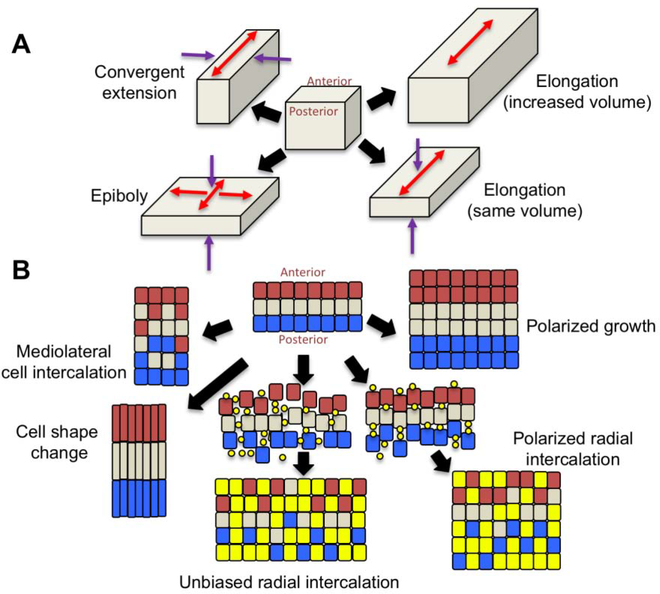Figure 1. Tissue shape changes.
A. Ways in which a tissue can change shape. Convergent extension makes the tissue longer and narrower, epiboly makes it wider and flatter, and elongation makes the tissue longer without changing the width, and can either occur with a change in tissue volume or without. Arrows indicated the direction of tissue shape change (red = expansion; purple = narrowing or thinning). B. Cellular behaviors that can lead to the tissue shape changes shown in A. Convergent extension can be accomplished by polarized cell intercalation or by polarized cell shape change. Radial intercalation occurs when cells from an underlying layer insert themselves into the upper layer. In this example, yellow dots are cells starting to insert from underneath, and become the yellow squares as they join the overlying layer. Radial intercalation can be either unbiased, expanding the original cell layer in both anterior-posterior and mediolateral dimensions (epiboly), or polarized, expanding the tissue in only one dimension (elongation), and in both cases the tissue thins. Polarized cell division when coupled with cell growth leads to elongation with an increase in tissue volume.

